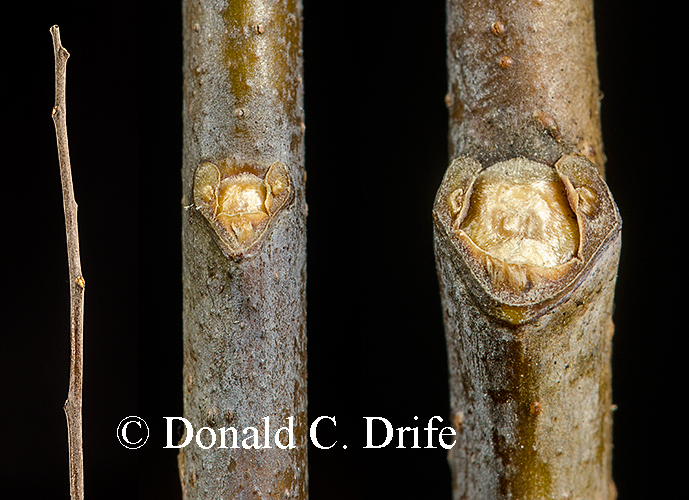
I was asked to identify a fruiting elm shrub. It was actually a Hop-tree or Wafer-ash (Ptelea trifoliate). Ptelea is the ancient Greek word for elms. The fruit resembles a large elm fruit (1.9 to 2.5 cm [3/4 to 1 inch] in diameter) but the veins of the wings are more pronounced than an elm and are continuous, not notched as an elm is. They have been used as substitutes for hops in beer brewing.

The leaves are compound with three leaflets and are entire or sometimes with fine teeth. They are alternate which helps to distinguish it from the opposite-leaved Bladdernut (Staphylea trifolia) if one only has the leaves.
The greenish-white flowers appear with the leaves. They are small for a flower that is insect pollinated but their aroma attracts insects. I do not care for the aroma but some people think it resembles lime.

The slender twigs have short, stubby hairs. Buds are hidden under a membrane but expand and break through it in late winter. The leaf scar almost surrounds the bud and has three vascular bundle scars. The terminal bud is absent.
Hop-tree is a member of the Citrus Family (Rutaceae). Our other native citrus is prickly-ash (Zanthoxylum americanum). Hop-tree is found in southern Michigan. Keep an eye out for it this winter. It holds its seeds so it can easily be identified. Look for it in southern Michigan on the sand dunes of Lake Michigan, or in open sandy fields, and also along rivers.
Copyright 2019 by Donald Drife
Webpage Michigan Nature Guy
Follow MichiganNatureGuy on Facebook
